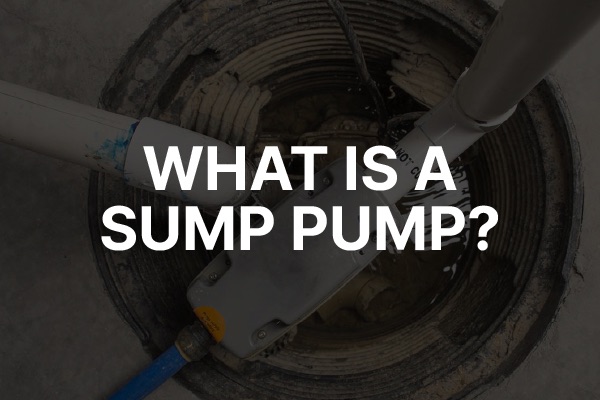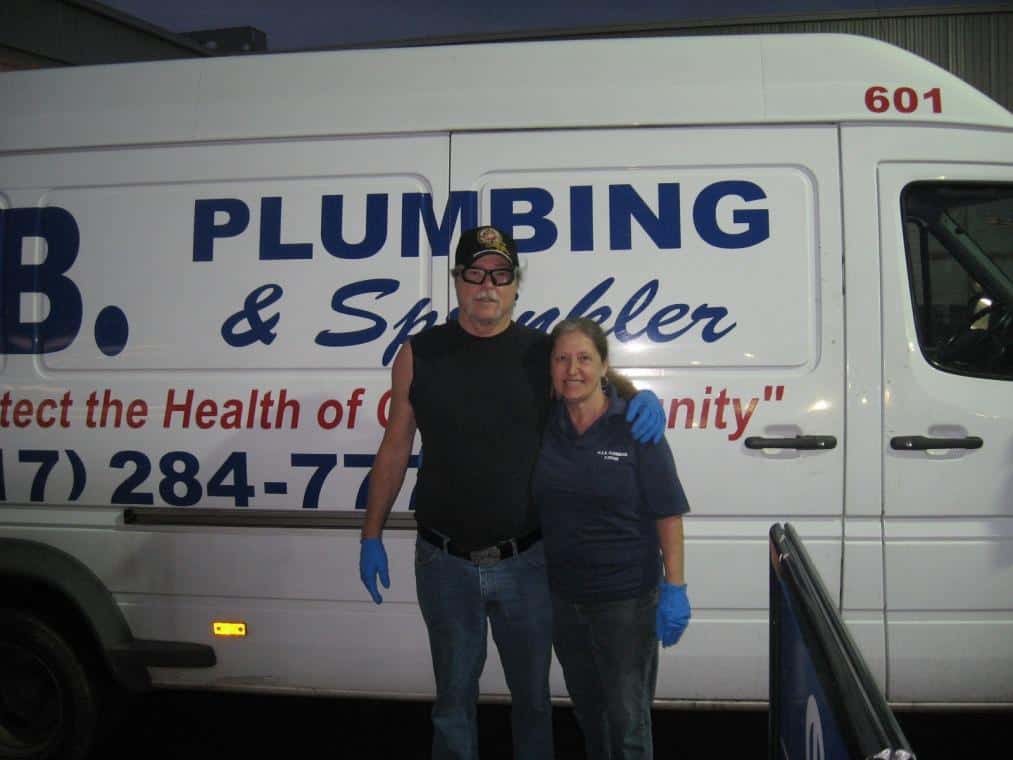
Table of contents
While you have probably heard of sump pumps, you may not be exactly sure what they are or what they are used for. By the time you actually need to invest in your own, they can seem intimidating to figure out. Never fear! The HEB Plumbing & Sprinkler team has put together this primer to help you understand sump pumps.
How a Sump Pump Works
Sump pumps move water from your basement out of your home which helps prevent the basement from flooding. The sump is a pit that is carved below the main surface of your basement floor. This pit is also known as the basin and it holds the sump pump. The pump is equipped with valves that sense when the water rises by sensing how much pressure is in the basin.
When the water levels get too high, the sump pump automatically turns on and pumps the excess water out of the basement and away from your property. This is done using what is known as a discharge line (also called an effluent). The line leads the water to the designated drainage area which is generally a dry well, creek, pond, or neighborhood drain.
The Different Types of Sump Pumps
There are many different kinds of sump pumps to choose from which each have their own benefits and drawbacks. Here is an overview of three of the most common types:
Submersible Sump Pumps
Submersible pumps contain the pump and the motor in one unit. They sit submerged and closed inside the basin which helps them run quieter and allows you to save space in your basement. They also tend to clog less often than the pedestal sump pump. These are great for areas where flooding is a frequent concern.
Pedestal Sump Pumps
This type consists of a separate motor and pump. The motor sits on a pedestal above the basin while the pump sits inside the basin. A hose is then run from the basin to the pump. When it turns on, the pump sends water through the hose and out to the designated drainage area. Since the motor is not submerged, it is protected from water damage which makes it easier to maintain and last longer. However, this also means that it is louder and takes up more space than the submersible pump.
Battery-Operated Backup Sump Pumps
Battery-operated backup sump pumps provide extra security from flood damage. They have a float switch that allows them to operate even when the power goes out during a storm. When water continues to rise in the basin, the switch is triggered and sends power from the battery to the sump pump.
How Can I Tell If I Need a Sump Pump?

Sump pumps are extremely important for areas that may experience flooding during heavy rain. The sump pump that you choose needs to have enough horsepower to handle your area’s level of flooding. If your sump pump’s horsepower is too low, it may not be able to get all of the water out of your area, leaving your home vulnerable to mold, mildew, and other problems.
Too high of horsepower can lead to your sump pump turning off and on repeatedly. This can halve the lifespan of the sump pump and increase your energy bills. An average size home with average amount of rainfall can make do with a sump pump that has one third horsepower.
Types of Switches Available for a Sump Pump
In addition to different types of sump pumps, there are also different types of switches that signal those sump pumps. If the sump pump never gets the signal to turn on, it can’t do its job which makes choosing the right switch just as important as choosing the right pump.
- Pressure Switch
- A pressure switch senses the amount of pressure in the water as it rises and triggers the action of the pump at a certain level.
- Float Switch
- As its name implies, this type of switch consists of a float attached to the pump that sits on the surface of the water. As the water rises, so does the float switch which then gives a signal for the pump to turn on.
- Diaphragm Switch
- This switch works much like your diaphragm. When the water pressure rises, it makes the switch concave, turning on the pump. When the water pressure lowers, the switch can expand and turn the pump off. This is the most commonly used type as it doesn’t get damaged as easily as the others.
- Electronic Switch
- This switch works by sensing the water pressure within the basin through probes. When the probes are set off, the pump turns on.
Need a Sump Pump to Protect Your Basement From Flooding?
The best time to think about what type of sump pump you need is before you actually need one to keep your home dry during heavy rainfall. You probably store a lot of important family memories and expensive items in your basement. Let the HEB Plumbing & Sprinkler team help you make sure you never have to learn how difficult it is to replace those items after flood damage. We’ll work with you to make sure your home and plumbing are protected, come rusty pipes or flooding rainwater. Don’t wait for the next flash flood warning; contact our team today!
